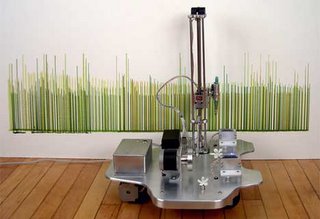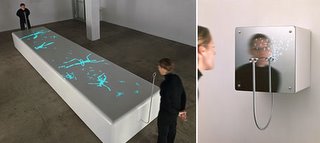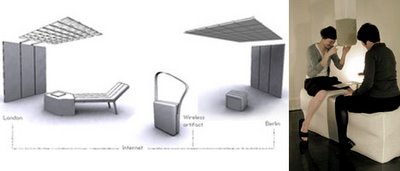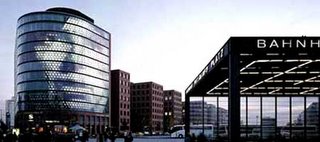Translator II

Translator II: Grower is a small 'rover' vehicle which navigates around the periphery of a room. It hugs the room's walls and responds to the carbon dioxide levels in the air by drawing varying heights of 'grass' on the walls in green ink. The Grower robot senses the carbon dioxide (CO2) level in the air via a small digital CO2 sensor. This sensor is mounted high on a wall of the exhibition space and sends data wirelessly to the robot. The number of people in an exhibit space breathing in oxygen and exhaling CO2 has an immediate effect on the sensor. The robot takes a reading of the CO2 level every few seconds and in response it draws a vertical line in green ink on the wall. The line height pertains directly to the level of CO2 (and therefore also the people traffic) in the space. The more CO2, the higher the line is drawn - the maximum height being 1ft. Once Grower completes a line, it moves forward several millimeters and repeats the process. By the end of the process the bases of all the walls in the space are covered with fine green lines which together resemble a cross-section of a field of grass.
Sabrina Raaf is a Chicago-based artist who works in both experimental sculptural media and photography. She is a producer of creative machines - machines that independently make art when cross-pollinated with human interaction









